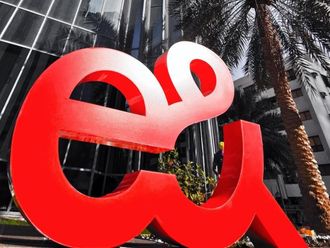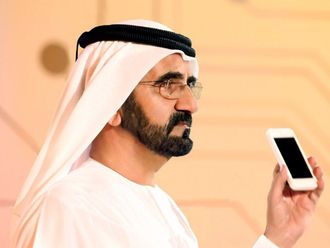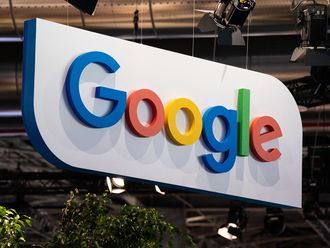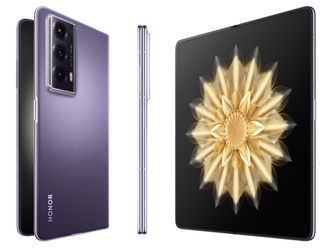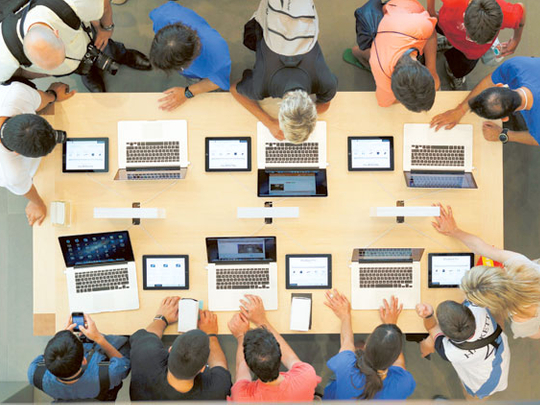
SAan Jose: Apple Inc marketing chief Phil Schiller told a jam-packed courtroom on Friday that Apple’s strategy in maintaining its market momentum is to “make the product the biggest and clearest thing in advertising.”
Schiller was the latest Apple executive to take the stand in a high-stakes US patent trial against Samsung Electronics Co Ltd.
The 15-year Apple veteran told the jury the company has spent a total of about $647 million on advertising for the iPhone, launched in 2007, and over $457 million for the two-year-old iPad.
Dressed in a dark suit and yellow tie, Schiller - who favours blue jeans and is one of a handful of executives reporting directly to CEO Tim Cook - said Samsung’s copying of Apple’s designs has hurt its sales and disrupted its marketing.
“I was pretty shocked at the appearance of the Galaxy S phone and the extent it appeared to copy Apple products,” he told the jury, adding that he was even more shocked when he saw the Galaxy tab. “I thought they’ve done it again, they’re just going to copy our whole product line.”
Apple accuses Samsung of copying the design and some features of its iPad and iPhone, and is asking for billions of dollars in damages and a sales ban. The Korean company, which is trying to expand in the US market, accuses its rival across the Pacific of infringing on some of its key wireless technology patents.
The trial, being played out in San Jose this summer before much of the technology industry, mirrors the global struggle for mobile industry supremacy between two arch-rivals that together control more than half of worldwide smartphone sales.
Apple fans, investors and rivals are getting a rare glimpse into the zealously guarded internal processes at a company that has won respect in the industry not just for its products but also its marketing savvy and streamline supply chain operation.
Schiller, continuing his testimony from Tuesday, had described the “Apple New Product Process” blueprint, or ANPP internally, that the company follows when launching products.
This week, 17-year industrial design veteran Christopher Stringer also gave a behind-the-scenes look at the hardware design process behind some of the world’s most celebrated consumer electronics, such as the iPhone.
NO ‘THEATRICS’, JUDGE WARNS
Before Schiller took the stand on Friday, US District Judge Lucy Koh rejected Apple’s request for severe sanctions against Samsung over the conduct of one of Samsung’s attorneys, even as the judge said that conduct risked tainting the jury.
Koh voiced concerns about a Samsung press statement earlier this week that contained links to documents that she had ruled could not be admitted at trial, along with a statement that “fundamental fairness requires that the jury decide the case based on all the evidence.”
Samsung attorney John Quinn, of the law firm Quinn Emanuel Urquhart & Sullivan, acknowledged in a court filing that he authorized the press statement but said it was not designed to influence the jury.
Apple had asked Koh to punish Samsung by ruling that Apple’s phone design patents were valid, and infringed. In court on Friday, Koh rejected that request, but said there may be more investigation of the events after the trial.
“I will not let any theatrics or any sideshows distract us from what we are here to do,” Koh said.
Koh then brought in members of the nine-member jury, one at a time, to ask if they had read anything about the case since Tuesday. One juror said he had read Internet headlines but not the articles, and all said they could still be impartial.


